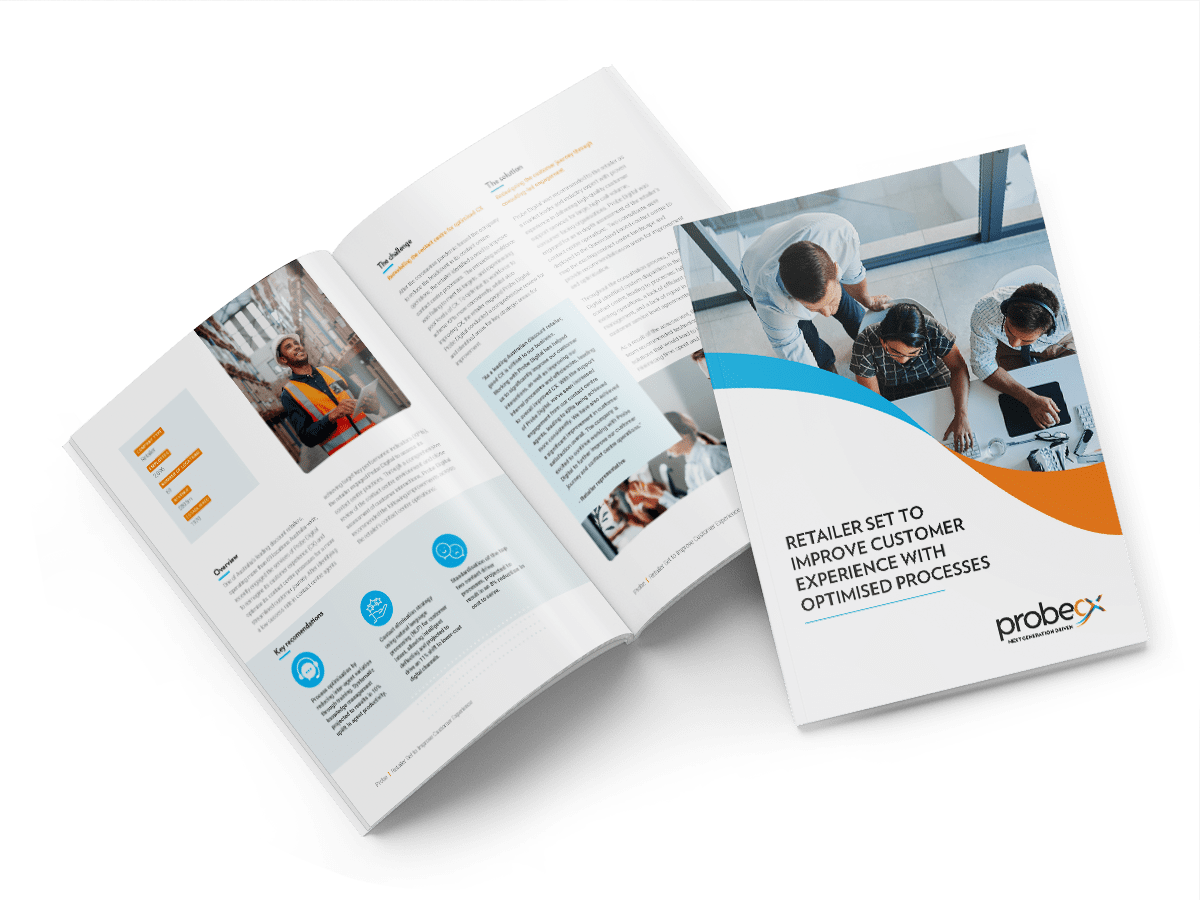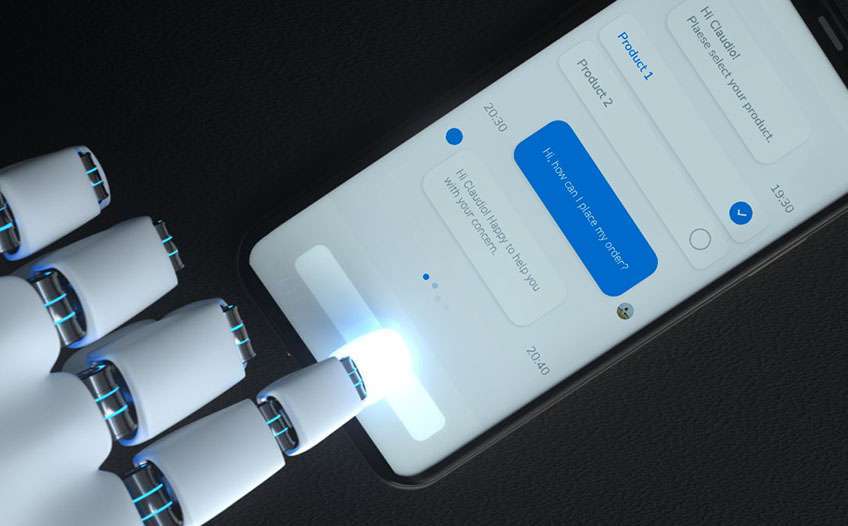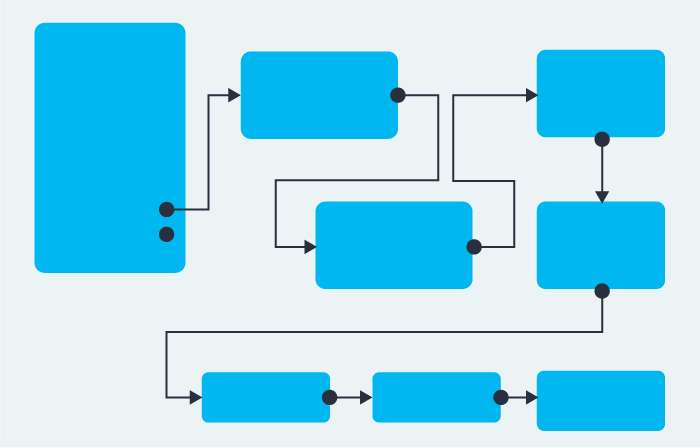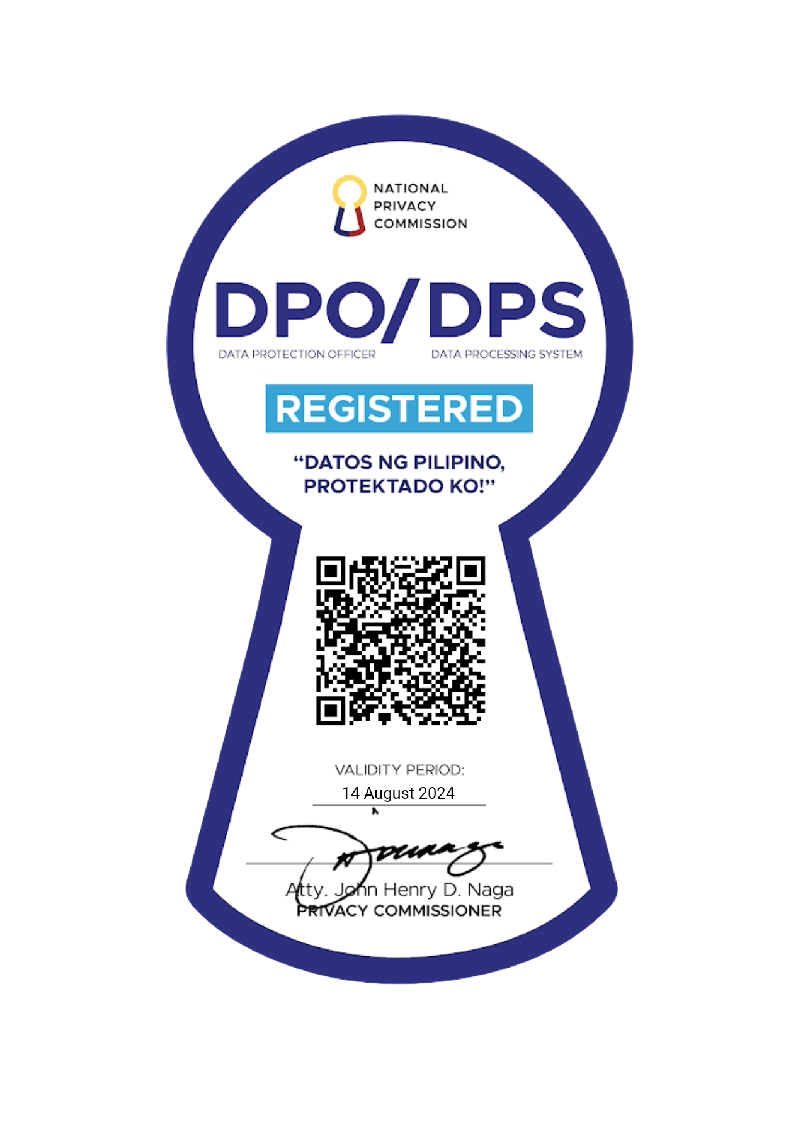-
About Us
Probe CX is a tech-powered, global customer experience organisation that amplifies human capabilities with technological excellence.
-
Vision and Culture
We help our clients become modern digital organisations by combining the latest technology with people, process and data.
-
Executive Team
Meet the team with unmatched experience committed to helping organisations create environments for digitally-enabled CX to thrive.
-
Compliance
Industry-recognised certifications to protect what matters most to our clients and their customers.
-
Locations
Over 19,000 team members delivering exceptional customer experiences across five countries.
-
Reasons to choose Probe CX
The top nine reasons to get more closely acquainted with Probe CX.
TECHNOLOGY & TRANSFORMATION SERVICES
 Creating exceptional customer experiences by 'doing it better'
Creating exceptional customer experiences by 'doing it better'
Optimise your customer experience by designing, deploying and managing digital solutions customised to your unique needs.
Continue reading- Blog
- How to design chatbot workflows
How to design chatbot workflows

It would seem you are well aware a chatbot is a computer program that simulates and processes human conversation – either written or spoken – thus allowing humans to interact with digital devices as if they were communicating with a real person. There is every chance you also know chatbots can be simple text-based mechanisms programmed to respond in pre-determined ways to specific questions or, as is increasingly the case, developed using artificial intelligence (AI) to allow users to engage in a more conversational manner. Crucially, the latter also uses natural language processing (NLP) and machine learning to become contextually aware and evolve as they are exposed to more human language.
We can also assume you appreciate why businesses are rushing to join the chatbot revolution, so much so that one report shows the global chatbot market is expected to almost quadruple from $2.6 billion in 2019 to an incredible $9.4 billion in 2024. The benefits for people on both sides of the commercial divide are numerous. Customers relish that chatbots are available 24/7, can provide instant and consistent answers, and are endlessly patient on calls. Likewise, businesses love their ability to reduce costs, increase efficiencies, boost customer experience and reach new customers via bot platforms such as Kik and Facebook Messenger.
So now that we’ve confirmed you are already across the what and why of chatbots, let’s get to the real reason you came here – the how.
What is a Workflow?
In creating a chatbot workflow, it is essential to map out the sequence of interactions between the user and the bot, defining the steps required to achieve the desired outcomes efficiently. By structuring the flow of conversation, the chatbot can effectively understand user inquiries and provide accurate responses, ensuring a seamless and engaging user experience.

In the modern world, one of the best ways for companies to improve their workflows is through automation – that is, using scalable technological solutions to replace manual and time-consuming processes. The likes of customer support and lead generation are essential for the success of any business but the reality is they require employees to spend endless hours answering basic questions and gathering data, all for little direct financial return. Now imagine the benefits that unfold when automation is introduced to such workflows – or, in other words, chatbots.
Substituting chatbots for humans when tackling tasks such as customer service allows employees to focus on higher-value functions such as boosting revenue. Better still, chatbots are a cost-effective 24/7 resource, unbiased and never require days off for illness or leave.
Creating a Chatbot Workflow
It is understandable that once people realise the game-changing nature of chatbots, they are desperate to roll them out. As the saying goes though, preparation is everything. Laying a solid foundation will enhance a chatbot’s chances of success and that requires its creators to dedicate time to brainstorming, research and planning the workflow to ensure tasks are completed efficiently and to a high standard. Before launching a chatbot, people need to address the following:
- Planning
- Creation
- Content
- Greetings
- Failure.
Planning
A chatbot is nothing without a clear set of plans based on research and goals. Think about the problem you need to address, who your users are and what value a chatbot can add to the situation. Whether providing basic technical support, answering customer FAQs or spreading awareness of a product, an effective chatbot workflow framework requires extensive research. Study who your users are, review past interactions with them and work with your current staff to understand and identify callers’ behaviour patterns. Whether your goals are raising customer service levels or reducing human interaction, draft a rough map of potential workflows including how requests and responses flow through the company and at what point a chatbot may need to defer to a human employee.
Creation
With the hard work of research and goal-setting done, it is now time to create a detailed chatbot workflow. There are countless online examples of chatbot workflow diagrams and you should take the time to review and analyse those that relate to handling similar interactions. Most of them will show that a chatbot design workflow needs to account for different possibilities depending on a user’s responses. Consider various scenarios that could unfold during a call and map the workflow to ensure the chatbot is driving customers in the direction of a successful outcome. Quality chatbot workflow examples must account for all potential scenarios as there are multiple ways for callers to reach a question. Also, remember there will be moments when a chatbot can no longer help the user. It is at this point the workflow should incorporate human intervention, be it transferring the caller to an employee or asking them to contact a physical help desk.
Content
The golden rule when it comes to creating chatbot content is it should be clear and concise. Do not get sucked into overwriting as callers simply want efficient access to information – not to be dazzled by a script. Provide as much information in as few sentences as possible and, if torn about providing further details, give users the option of asking for more information via a spoken prompt or touch-phone direction. Having done your research, you will also be aware of the general personality of your users and should aim to remain consistent with the tone of voice and style of content they would most appreciate.
Greetings
While greetings essentially fall under Content, they warrant a subheading of their own given how important they are and how often businesses get them wrong. Your chatbot’s greeting will set the tone for ensuring user interaction so it is essential it starts on a positive note. Once again, your research will provide you with insights into your users and greetings should be crafted on how a typical caller would like to be addressed and the types of queries they would likely ask first. One of the joys of chatbots is that, unlike their human counterparts, they can be friendly and objective all day, every day and that should shine through in the scripts that govern them.
Failure
Let’s make one thing clear – designing a chatbot workflow is not easy, particularly in the early days. Predicting customer interactions lies at the very heart of the exercise and heaven knows how difficult that is. It is inevitable there will be instances when your chatbot is unable to adequately address an issue, while the complexity of human language and limitless potential for user queries means there will be times when roadblocks appear. Prepare for these moments by crafting content that politely informs the user to contact customer support. People appreciate honesty and it is better to fail gracefully than keep them on the line longer than they need to be. You should also learn from the experience and review and recraft the chatbot workflow to incorporate new steps or pathways to address the issue and ultimately improve the user experience.
Summary
Researching and creating a conversational workflow is a key ingredient for successfully rolling out a quality chatbot. For those organisations dipping their toes in the chatbot waters for the first time, it is also highly recommended to partner with experts in the field. There may well come a day when implementing a chatbot becomes second nature to you but experience matters at the outset and you will never regret working alongside people who can help plot the possible paths your users will take and minimize hiccups, errors and, ultimately, the potential wrath of those users.
Chatbots are just one type of automation sweeping the business world. Learn how one of Australia’s leading security companies saved about $80,000 in manual effort costs by introducing Robotic Process Automation (RPA) after encountering significant billing issues as a result of COVID-19.
Related Articles
Artificial Intelligence
What are PDD and SDD In RPA?
Do you know what PDDs and SDDs are in RPA? Here’s the difference between the two, as well as how they develop an automated process.
Intelligent Automation
What contact centres in 2028 could look like with Generative AI
Discover a world where technology is helping change the customer experience conversation for contact centre managers, agents and callers.
Shared Services
Probe CX navigated the COVID-19 work-from-home debate.
Following the Contact Centre Week interview, Probe CX's CEO Andrew Hume discusses the work-from-home mobilisation of its global organisation and what it means for the future of work.
© Copyright 2024 Probe CX | All Rights Reserved
Privacy Policy | Financial Hardship Policy | Whistleblower Policy | Complaints Procedure | Supplier Code of Conduct | Make a Payment | Client Login





